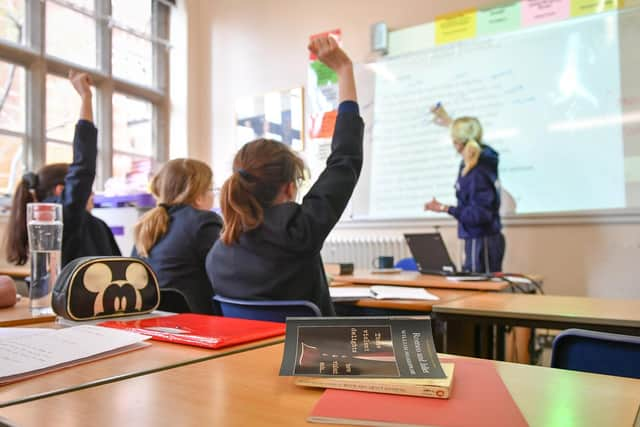No easy fix to recruitment crisis in teaching but apprenticeships are a part of the solution - Kim Chambers
Worryingly, this equates to 13 out of 17 secondary school subject areas being understaffed in respect of government targets, with STEM (science, technology, engineering and mathematics) subjects suffering the most.
A sense of apathy towards the profession is likely, in part, the result of students reconsidering their further and higher education options. In the wake of Covid-19 and the aftershocks of the cost of living crisis, many young people are instead opting for routes that allow them to start making money.
Advertisement
Hide AdAdvertisement
Hide AdTraditionally, the only route into the teaching profession was to get a degree, which can come with restrictions on your ability to earn, not to mention the cost of the course itself.


However in 2018, the first teaching apprenticeships were introduced as an alternative to existing postgraduate qualifications. Fast forward to now and teaching apprenticeships have proved to be an invaluable resource to an understaffed sector, supplying teaching professionals with hands-on experience.
Luminate Education Group, for example, boasts a comprehensive Initial Teacher Education (ITE) programme across three campuses in Yorkshire. The ITE programme was set up to accelerate the supply and preparation of high quality teachers, by providing non-traditional routes into teaching.
The apprenticeship path has great appeal to those seeking out a technical education. As of 2023, around half of school leavers were rethinking their plans to attend university, in favour of a route that will allow them to earn.
Advertisement
Hide AdAdvertisement
Hide AdTeaching apprentices get paid for the work that they undertake, making it accessible to those with personal responsibilities or who are already working. Furthermore, students on our ITE programme who teach in priority sectors that are suffering from regional skills shortages, such as STEM and languages, can also access bursaries.
Perhaps most crucially, such initiatives open doors to those from other professions who are considering retraining as teachers. The vast majority of our teaching apprentices study at and work for the group’s member colleges.
The programme provides us with a unique opportunity to ‘home grow’ our own teachers to help fill vacancies in the region.
It’s clear that the crisis in teaching recruitment is vast, and with vacancies in England being 93 per cent higher than pre-pandemic levels, there is no easy fix. However, it certainly seems that apprenticeships are becoming an increasingly important part of the solution.
Advertisement
Hide AdAdvertisement
Hide AdNext week is National Apprenticeship Week, which provides us with an opportunity to celebrate the positive impact apprenticeships have on our communities and wider economy. This new frontier of teacher training has made routes into the profession more accessible and flexible than ever before.
Skills development is fundamental to the growth of regional economies, and that all starts in the classroom. By embracing teaching apprenticeships, we invest not only in individuals, but the generations they will go on to train and inspire.
Kim Chambers is director of apprenticeships at Luminate Education Group.
Comment Guidelines
National World encourages reader discussion on our stories. User feedback, insights and back-and-forth exchanges add a rich layer of context to reporting. Please review our Community Guidelines before commenting.